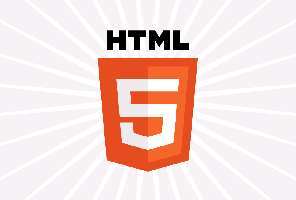| HTML 5.2 Gets W3C Backing |
| Written by Kay Ewbank | |||
| Monday, 18 December 2017 | |||
|
The latest version of HTML, version 5.2, is now a W3C Recommendation. This makes the existing HTML 5.1 recommendation obsolete, with HTML 5.2 now the official web standard, with support for JavaScript modules and better handling of online commerce. While HTML 5 was the cause of great excitement, the release of 5.1 last year was a much lower key affair, in large because the innovations were happening outside HTML in the form of new web technologies. The first public Working Draft of HTML 5.3 was published alongside the current version. In practical terms for the current 5.2 version, the main changes are as follows: A The new version has integration with the JavaScript module system introduced in ECMAScript 2018. This is now supported in HTML 5.2 via the use of
with rules on how a module will be resolved, fetched, and evaluated. This feature means it will be possible to load JavaScript modules, then to resolve, fetch, parse and evaluate module dependencies. There's a new Payment Request API that is designed to make is simpler to implement commerce systems on the Web, reducing the risks of users making a mistake or being caught by an unscrupulous operator. There's also a new Content Security Policy that's designer to be more effective at protecting users. The policy lets web developers control the resources that a particular page can fetch or execute, and also to speficy a number of security-relevant policy settings. Another improvement is the inclusion of features developed from ARIA (Accesible Rich Internet Applications). This enables the definition of semantic information about widgets, structures, and behaviors, so that assistive technologies can convey appropriate information to persons with disabilities. There are several more minor additions, but of equal interest are some features that have been removed. One main removal is support for plugins. The thinking behind the removal is that new technologies and capabilities such as virtual reality or speech interaction are now developed as part of the Web Platform, so providing better control over potential security flaws. Other HTML elements from older releases have been marked as non-conformant and the recommendation is that they must not be used. This means that in the future, browsers will be able to drop support for the older elements.
More InformationRelated ArticlesDeveloper's Edition Of HTML Makes Comeback HTML5 Is A Finished W3C Standard W3C Announce HTML5 To Be Ready Nearly A Decade Early Which HTML5? - WHATWG and W3C Split The One Addition That Would Make HTML5 Great No more version numbers for HTML To be informed about new articles on I Programmer, sign up for our weekly newsletter, subscribe to the RSS feed and follow us on Facebook or Linkedin.
Comments
or email your comment to: comments@i-programmer.info
|
|||
| Last Updated ( Monday, 18 December 2017 ) |


